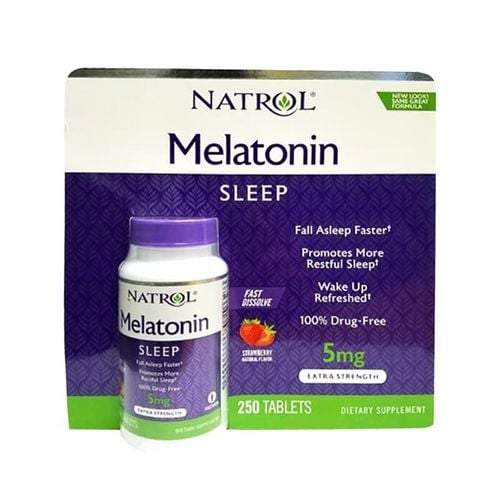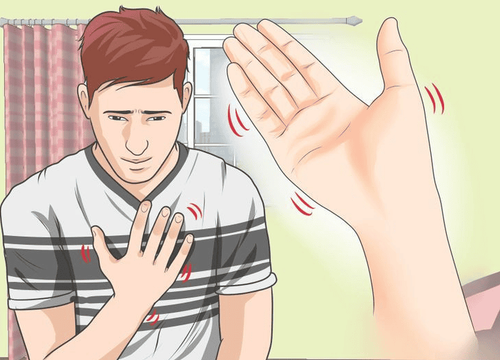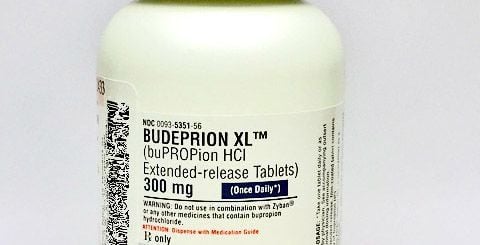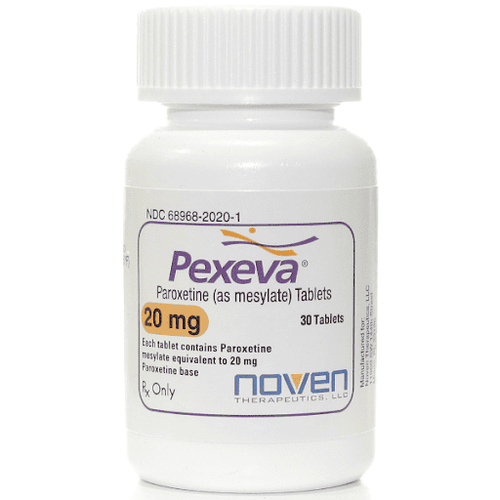This is an automatically translated article.
Escitalopram is used to treat depression, panic disorder, anxiety, and obsessive-compulsive disorder. This is one of a class of drugs known as selective serotonin reuptake inhibitors (SSRIs). The mechanism of action of this class of drugs is by increasing the activity of some of the neurotransmitters most likely involved in depression, which are thought to be serotonin and noradrenaline.1. What does Escitalopram do?
Escitalopram is indicated for use in the following cases:Depressive disorder: Escitalopram is indicated for the acute and maintenance phase of major depressive disorder in adults and adolescents. adolescents from 12 to 17 years old. Manifestations of depression are persistently depressed mood, loss of interest in normal activities, significant changes in weight and/or appetite, insomnia or excessive sleep, agitation or retardation. development, persistent fatigue, slow thinking, poor concentration, suicidal ideation or suicidal behavior.
Generalized Anxiety Disorder: Generalized anxiety disorder is characterized by anxiety lasting for at least 6 months and excessive anxiety that is out of control. A diagnosis of generalized anxiety disorder must be associated with at least 3 of the following symptoms: restlessness or feeling stressed, frequent fatigue, difficulty concentrating or mind blank, irritability, muscle tension and sleep disturbances.
2. Contraindications to the use of Escitalopram
Monoamine oxidase inhibitors (MAOIs) The use of MAOIs for the treatment of psychiatric disorders in combination with Escitalopram or within 14 days of discontinuation of Escitalopram therapy is contraindicated because of the increased risk of serotonin syndrome.Similarly, the use of Escitalopram within 14 days of discontinuation of MAOIs for the treatment of psychiatric disorders is also considered contraindicated.
Pimozide Concomitant use of Escitalopram is contraindicated in patients receiving pimozide.
Hypersensitivity to escitalopram or citalopram Escitalopram is contraindicated in patients with known hypersensitivity to escitalopram or citalopram or to any of the excipients.
3. How to use Escitalopram?
Escitalopram is prepared in the form of tablets for oral use with a round shape, film-coated outside, and escitalopram oxalate inside with the equivalent strength of 5 mg, 10 mg and 20 mg. In addition, Escitalopram is also presented as an oral solution, containing escitalopram oxalate equivalent to 1 mg/mL. Whatever the dosage form, Escitalopram should be taken once daily, morning or evening, with or without food.
Liều lượng thuốc chỉ định phụ thuộc Escitalopram vào tình trạng của người bệnh
Major depressive disorder The recommended dose of Escitalopram is 10 mg once daily. A trial that increased the dose of Escitalopram from 10 to 20 mg/day demonstrated better efficacy. However, if the dose is increased to 20 mg, it should be increased gradually over several weeks.
The duration of treatment for the acute phase of major depressive disorder should be several months or longer, with benefit usually being achieved in 8 weeks. Thereafter, the patient should be periodically evaluated for the long-term usefulness of the drug during the subsequent maintenance period.
Generalized Anxiety Disorder The recommended starting dose of Escitalopram 10 mg once daily. If the dose is increased to 20 mg, this can be considered at least one week after initiation.
Because generalized anxiety disorder is considered a chronic condition, the efficacy of Escitalopram after 8 weeks has not been systematically studied.
For most elderly patients and patients with hepatic impairment, the recommended dose of Escitalopram should be 10 mg/day. No dose adjustment is required for patients with mild or moderate renal impairment but should be used with caution in patients with severe renal impairment.
As adverse symptoms associated with discontinuation of Escitalopram as well as other SSRIs and SNRIs have been reported, this decision should be carefully weighed before it is made. Patients should be monitored for unusual symptoms since stopping treatment. It is more advantageous to reduce the dose gradually rather than abruptly stopping it. However, if symptoms are not tolerated after a dose reduction or after cessation of therapy, resuming the previously administered dose may be considered and the reduction is still required but at a more gradual rate. .
4. Possible side effects when using Escitalopram
Side effects when taking Escitalopram usually go away after a few weeks of treatment. However, it should be noted that these undesirable symptoms can sometimes also be symptoms of an existing disease. Accordingly, patients need to adhere to treatment to feel the discomfort improves.However, if the patient experiences any of the following symptoms, which is suspected as a side effect of the drug, contact a doctor immediately or go to the hospital immediately:
Unusual bleeding, including gastrointestinal bleeding. Swelling of the skin, tongue, lips, pharynx, or face; rash; difficulty breathing or swallowing is a suspicion of an allergic reaction. High fever, agitation, confusion, tremors, and muscle spasms can be signs of serotonin syndrome. Urinary retention Jaundice, yellow eyes is a sign of liver failure/hepatitis Fast, irregular heartbeat, possibly fainting. There are also other side effects that are very common when using Escitalopram but will resolve on their own after a period of treatment without the need for specific medical intervention such as: headache, stuffy or runny nose, decreased or increased appetite, anxiety, restlessness, nightmares, trouble sleeping, dizziness and gastrointestinal disturbances such as nausea, diarrhea, constipation, vomiting, Dry mouth.

Người bệnh khi sử dụng thuốc Escitalopram có thể cảm thấy tim đập nhanh, không đều
5. Some things to keep in mind when using Escitalopram
Tell your doctor or pharmacist if you have ever had an allergic reaction to Escitalopram or to any other medications or foodsIt may take a few weeks to feel the benefits of taking Escitalopram. Do not suddenly stop taking the medicine unless directed by your doctor.
Do not take Escitalopram if you have taken other medicines for depression such as MOAIs (phenelzine, tranylcypromine) or medicines for Parkinson's disease (selegiline or rasagiline) in the past 14 days. Taking those drugs with Escitalopram can cause dangerously high blood pressure.
Tell the doctor if the patient is pregnant, planning to become pregnant or breastfeeding. Patients should be counseled about the benefits and risks of taking the drug.
Escitalopram may increase the risk of bleeding, so caution should be exercised when combined with drugs that affect blood clotting such as aspirin or blood thinners.
Because Escitalopram can cause drowsiness, caution should be exercised when doing tasks that require concentration such as driving or operating machinery.
Avoid drinking alcohol while taking Escitalopram because it will increase the effect on the central nervous system.
In summary, Escitalopram is an antidepressant that works in the brain's mechanism of action. The appointment of drug use should be cautious in subjects with long-term depression, avoiding dangerous drug interactions. At the same time, the effectiveness of using Escitalopram depends on the adherence to treatment, the assessment of drug response as well as the indication for long-term use or the drug can be stopped in each different situation.
Please dial HOTLINE for more information or register for an appointment HERE. Download MyVinmec app to make appointments faster and to manage your bookings easily.
References: webmd.com, accessdata.fda.gov, healthnavigator.org.nz












